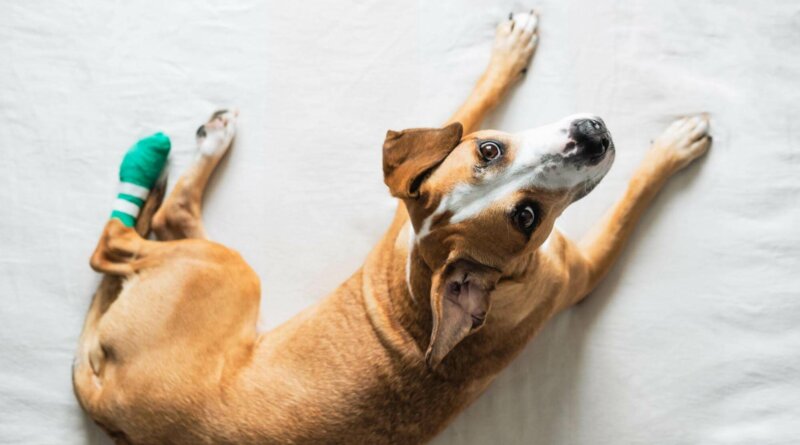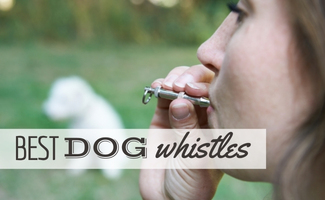Puncture Wounds in Dogs | How to Treat Injuries
If you’re a pet owner, you may have to deal with a puncture wound. These injuries can be severe if not treated properly, so it’s essential to know how to identify and treat them. We’ll discuss what puncture wounds are, how they occur, and how to care for them. We’ll also provide some tips on preventing puncture wounds from happening in the first place. Read on to learn more!
What are Puncture Wounds on Dogs and What Causes Them?
Your pup can get into all sorts of trouble. One of the most common injuries that dogs suffer from is puncture wounds. These wounds often occur on the feet, but they can also appear elsewhere on the body. These types of injuries need to be cared for promptly to prevent infection. If you can find a class in your area that teaches basic pet first aid, it would be helpful to know how to handle injuries with confidence.
Ordinary Objects That Cause Puncture Wounds
- Nails
- Thorns
- Teeth
- Glass
- Metal
- Porcupine Quills
Symptoms of Puncture Wounds in Dogs
If your dog has been limping lately, there’s a chance that he may have hurt himself somewhere. As you know, dogs like to play around, and even if they’re chasing a squirrel or fighting with another dog in the yard, they can be on the receiving end of an injury. Look out for these symptoms and take care of them accordingly.
- Punctured skin
- Bleeding
- Swelling
- Redness of skin
- Watery discharge
- Pain
- Infection
- Shock
Puncture Wound Treatment
There are a few steps to follow to ensure proper healing for your pup in any injury. If you feel uncomfortable going forward with any of these, you should contact your veterinarian immediately.
Bandage
You should bandage a wound if the gash is bleeding profusely, it’s a chest injury, or if the object is still lodged inside the body.
Restrain
Calm your pup down so you can help take care of the injury. You might need to muzzle your dog for your safety.
Refrain
If your dog is anxious, panicked, or in a lot of pain, you might not be able to perform first aid. Do not put yourself at risk; instead, reach out to your vet.
Washing
Do not use antiseptics or disinfectants on puncture wounds located on the abdomen or chest. Contact your vet immediately for the best practice for this type of injury.
Check
As a rule of thumb, it is best practice to contact your vet care provider to determine tetanus and other vaccination status. Vaccinations can help prevent diseases from being passed betwen animals and from animals to people.
Puncture Wounds from Animal Bites
Unfortunately, there may be a time another animal bites your pet. It’s pretty common; however, this injury still needs to be taken seriously, and appropriate first aid is essential.
Protect Yourself
Your pup might be excited or in pain; make sure that you are in a safe position before you start to give first aid. This might include putting a muzzle on your dog so he doesn’t bite out of fear or pain.
Shock
Check your dog for shock, panting, pale skin and gums, cool and clammy skin, weakness, extreme thirst, and exhaustion.
Muscle Injury
If there is damage to the muscle, clean it with water. Keep a close eye on your pup and look for signs of shock. Transport the dog to your veterinarian right away.
Abdomen Injury
When puncture wounds to the stomach area, do not allow your pet to lick the injury. Wrap the punctured area with a warm, damp sheet and take your dog to the urgent care vet.

Splinter Punctures
Humans dislike having splinters, and it’s just as unpleasant for dogs. Dogs can get shards from walking on rough surfaces, playing with toys, or going through wooded brushes. Just like us, they may whimper and cry when they get one. So, if you see your dog limping or acting painful, check for a splinter. Quickly removing the splinter will help your furry friend feel better.
- Wash the affected area with warm soapy water.
- Remove the splinter with a pair of tweezers.
- Rewash the area with warm soapy water or a disinfectant.
Porcupine Quill Puncture Wounds
If your dog encounters a porcupine, he could experience severe pain and even damage to his internal organs. Porcupines have sharp quills that can get embedded in your dog’s skin, causing him distress. If possible, seek medical help immediately.
- In the best-case scenario, a veterinarian should remove the quills while your pup is under aesthetic care.
- Please don’t remove them yourself. Trying to get them out is extremely painful for your dog.
Preventative Measures Against Puncture Wounds
While you cannot keep your pup in a protective bubble and prevent them from getting hurt, there are some things you can do to be more aware in certain situations to lessen the possibility of an injury.
- Scan your surroundings to see hazards before it’s too late.
- Look into pet insurance to cover emergencies, routine care, and illnesses.
- Create a safe yard and home, be mindful of things that could cause harm.
- Obedience training so your pup listens to commands right away.
Commonly Asked Questions About Dog Puncture Wounds
How Long Does it Take for a Puncture Wound to Heal in a Dog?
It usually takes about three to four days for a wound to heal if proper cleaning and treatment have been administered.
How Can I Tell if the Wound is Infected?
Infection can set in between two and five days. Some signs of infection include swelling, pain, pus, swelling, redness, and heat. A dog may also experience nausea, diarrhea, and vomiting.
What is the Most Frequent Cause of Puncture Wounds in Dogs?
There are many causes of puncture wounds; however, the most common ones include: falling on a pointed object, stepping on something sharp, like a nail, and getting bitten.




